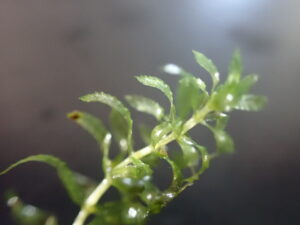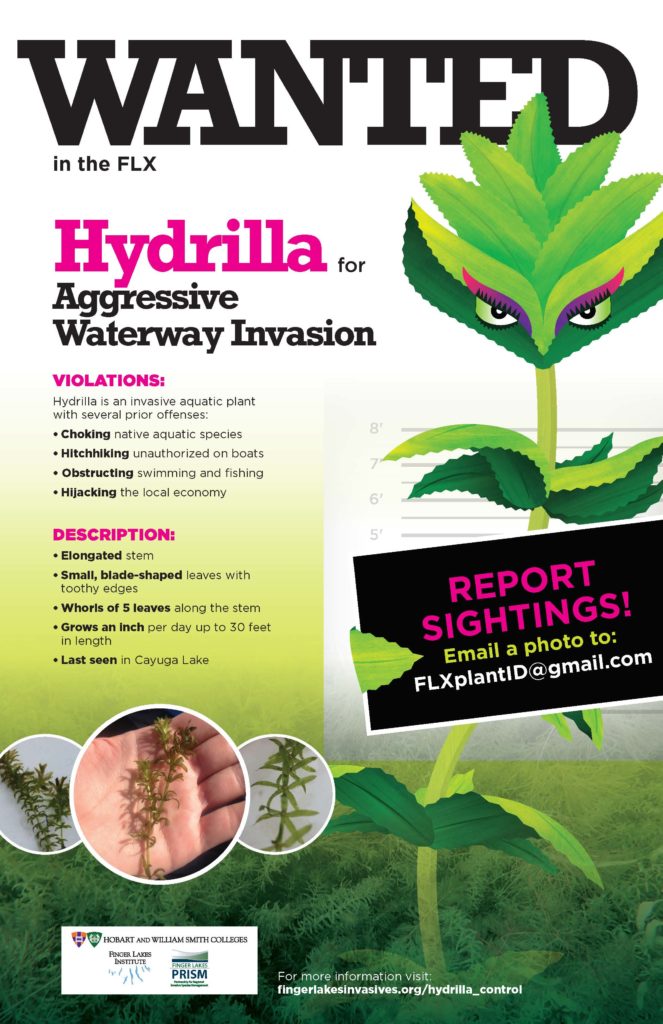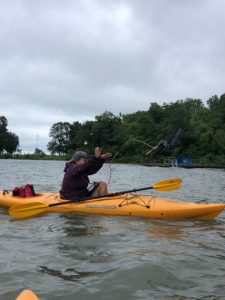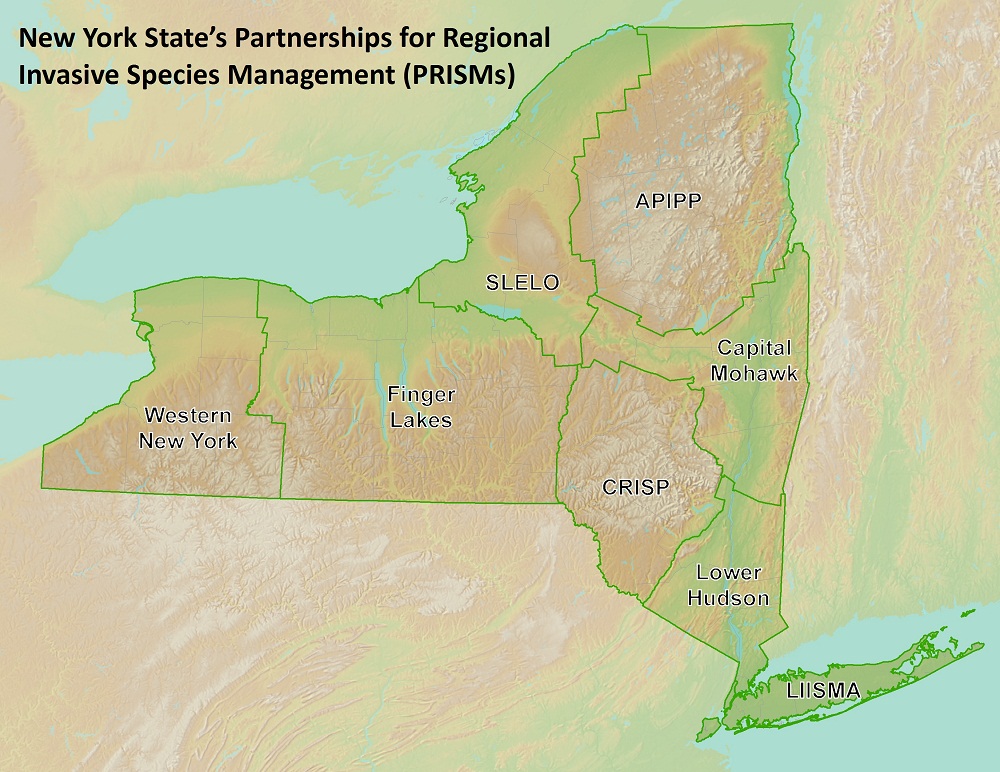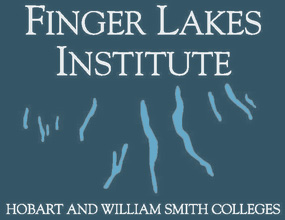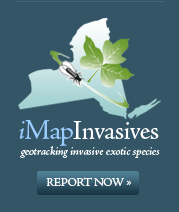WANTED IN THE FLX: Hydrilla
What is Hydrilla?
- Hydrilla (Hydrilla verticillata) is an invasive submersed aquatic plant, originating from Europe and Asia, that has infested Cayuga Lake and other water bodies in the Finger Lakes Region
- Hydrilla is a perennial plant with noticeably toothed leaves that often grow in whorls of three to eight, usually five
- Hydrilla spreads quickly and grows in dense stands that out-compete native species and negatively affect the aquatic ecosystem
- Hydrilla can clog waterways and hinder recreational activities including boating, fishing, and swimming
- Hydrilla is commonly spread by boating and fishing equipment. Therefore, education and stewardship are the best management strategies to prevent its spread
Email aslentz@hws.edu for printed copies of these posters!
Hydrilla in Our Region
Hydrilla has been reported throughout the FL PRISM in Monroe, Cayuga, Tompkins, Broome, and Tioga counties. For more information about hydrilla, visit the DEC webpage here: (https://dec.ny.gov/nature/animals-fish-plants/hydrilla).
The Tompkins County hydrilla infestation in Ithaca has been the focal point of concern since being detected 2011, commencing removal efforts in Cayuga Lake. In October 2016, a separate infestation was identified approximately 35 km north of Tompkins County, near Aurora in Cayuga County. To combat this, the United States Army Corps of Engineers (USACE) has been actively engaged in treatment and monitoring, collaborating closely with local stakeholders. Since 2016, ongoing survey efforts have revealed three additional hydrilla populations on Cayuga Lake. Two instances were reported at private marinas in 2018 and 2019, and another near Sheldrake Point in 2022.
Beyond Cayuga Lake, other hydrilla populations have been documented in our region. Tinker Park in Rochester experienced an infestation in 2015, while private ponds in Tioga County were documented as having hydrilla present in 2016. A more recent discovery in 2023 revealed the presence of hydrilla in the upper Susquehanna River.
Map with extent of hydrilla
Data taken from iMapinvasives. Absence of data does not necessarily mean absence of the species at that site, but that it has not been reported there. For more information, please visit iMapInvasives.
Control
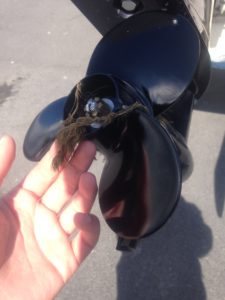
Plants caught in a prop. Always make sure to check your prop before and after launching your boat to stop the spread!
Hydrilla is a notoriously difficult plant to control, given that any piece of the plant that breaks off can grow to create an entirely new plant. That does not mean that it is impossible to control however. Several methods have been used to control hydrilla, each with their own strengths and weaknesses, these include:
- Herbicides
- Benthic Mats
- DASH (Diver Assisted Suction Harvesting)
- Dredging
The FL-PRISM has been passively working with partners and stakeholders in the region to manage known infestations and prevent further spread. This includes funding herbicide treatments and dredging at two infested sites along Cayuga Lake beginning in 2019. More information can be found about the ongoing battle to control hydrilla in Cayuga Lake in the interactive StoryMap below!
Survey
In 2017, the Finger Lakes Institute (FLI) at Hobart and William Smith Colleges (HWS) began our hydrilla project, with the goal to survey for and control hydrilla infestations in the Finger Lakes Region. Point-intercept surveys were conducted in waterbodies known to have hydrilla populations, waterbodies nearby known populations, and areas around high-use boat launches in the region. Surveys target the recreational boating pathway of invasion, specifically boat launches and marinas.
The hydrilla project is possible thanks to the funding from the Environmental Protection Agency Great Lakes Restoration Initiative (EPA GLRI) grant, Finger Lakes – Lake Ontario Watershed Protection Alliance (FLLOWPA), and the Finger Lakes Partnership for Regional Invasive Species Management Program (FL PRISM) funded by the New York State Environmental Protection Fund (EPF) administered by New York State Department of Environmental Conservation (NYS DEC). An annual overview of previous seasons of the hydrilla project can be found in the table below. For a detailed summary of plant surveys conducted in our search for new hydrilla populations, check out the story map below!
| 2018 | 2019 | 2020 | 2021 | 2022 |
2023 | |
| # Rake tosses | 1,902 | 7,478 | 10,733 | 18,025 | 12,269 | 10,341 |
| # Waterbodies sampled | 2 | 16 | 15 | 13 | 12 | 12 |
| # Counties sampled | 3 | 11 | 13 | 11 | 10 | 10 |
| Area surveyed (acres) | ~107 shoreline miles | 3,569 | 8,100 | 20,929 & ~50 shoreline miles | 10,744 | 5967.5 |
